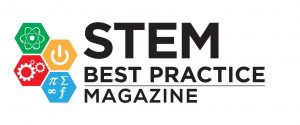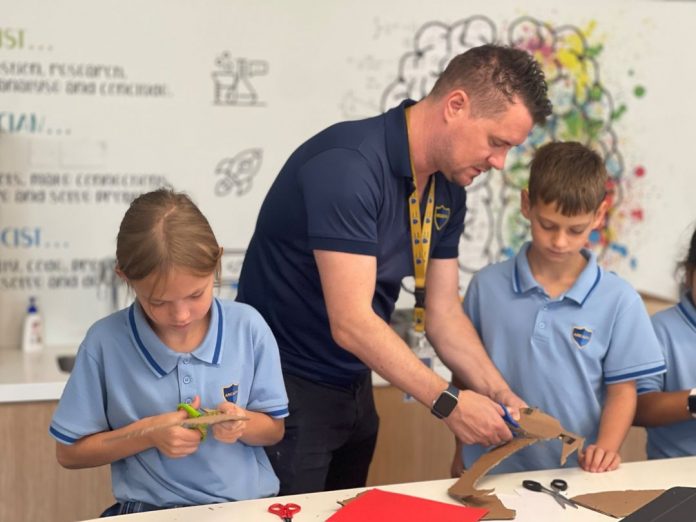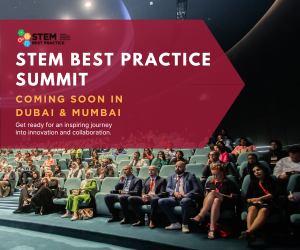The Innovation Trail: Phil Long’s Story
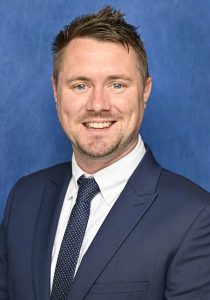 Phil is an innovative and passionate STEM educator dedicated to fostering excellence in K-12 education. With a strong background in developing engaging curricula and promoting critical thinking, Phil has a proven track record of implementing creative learning strategies that empower students to explore STEM concepts deeply. He currently serves as a key member of the educational team at Arcadia British School, Dubai, as the Head of Primary STREAM, where he leads various innovation projects, including the Formula Ethara program, which challenges students to design and build their own race cars, applying principles of physics and engineering to real-world scenarios.
Phil is an innovative and passionate STEM educator dedicated to fostering excellence in K-12 education. With a strong background in developing engaging curricula and promoting critical thinking, Phil has a proven track record of implementing creative learning strategies that empower students to explore STEM concepts deeply. He currently serves as a key member of the educational team at Arcadia British School, Dubai, as the Head of Primary STREAM, where he leads various innovation projects, including the Formula Ethara program, which challenges students to design and build their own race cars, applying principles of physics and engineering to real-world scenarios.
Phil is deeply passionate about project-based learning (PBL), recognizing its ability to immerse students in real-world challenges and develop essential problem-solving skills. His teaching philosophy centers on empowering students to direct their own learning and creative outputs, encouraging autonomy and critical thinking. Through hands-on projects andKagan structures, Phil fosters an environment where collaboration and innovation thrive.
An advocate for sustainability in education, Phil integrates the Sustainable Development Goals (SDGs) into his curriculum, guiding students to understand their roles in addressing global challenges. He is also a judge for the Yas in Schools Formula Ethara finals, which has allowed him to deepen his understanding of STEM education while providing invaluable insights into student learning.
Beyond the classroom, Phil is passionate about speaking and teacher training. He actively shares his expertise through workshops and presentations, aiming to inspire fellow educators and foster a culture of innovation. Committed to lifelong learning, Phil stays updated on the latest trends and research in STEM, constantly seeking ways to enhance the learning experiences of his students.
- How do you encourage students to think creatively and approach STEM problems from an innovative perspective?
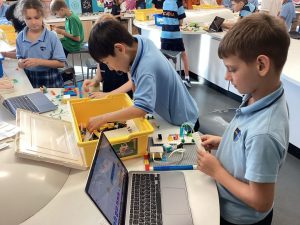 Encouraging creative thinking in STEM requires a multifaceted approach that promotes student agency and collaboration. I employ Kagan structures, such as Think-Pair-Share and Rally Robin, to cultivate an environment where students actively engage in discourse, sharing diverse perspectives that lead to innovative problem-solving. This method aligns with findings from the National Research Council (2012), which emphasize the importance of collaboration in enhancing cognitive engagement. Additionally, I integrate ePortfolios through Book Creator, empowering students to document their learning journeys and reflect on their creative outputs. This process not only fosters accountability but also encourages students to take ownership of their learning, promoting intrinsic motivation.
Encouraging creative thinking in STEM requires a multifaceted approach that promotes student agency and collaboration. I employ Kagan structures, such as Think-Pair-Share and Rally Robin, to cultivate an environment where students actively engage in discourse, sharing diverse perspectives that lead to innovative problem-solving. This method aligns with findings from the National Research Council (2012), which emphasize the importance of collaboration in enhancing cognitive engagement. Additionally, I integrate ePortfolios through Book Creator, empowering students to document their learning journeys and reflect on their creative outputs. This process not only fosters accountability but also encourages students to take ownership of their learning, promoting intrinsic motivation.
- Can you share an example of an innovative project or activity you’ve introduced that helped students develop new solutions to real-world problems?
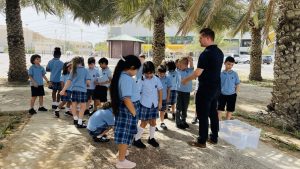
A notable project that exemplifies innovative learning is our initiative using Lego Spike to design, build, and code Mayan civilizations, which immerses students in hands-on engineering and programming challenges. This project embodies the principles of project-based learning (PBL), allowing students to engage with historical contexts while applying STEM concepts creatively.

Moreover, my involvement as a judge for the Yas in Schools Formula Ethara finals provided me with valuable insights into the program’s structure, which I subsequently implemented in my classroom. The Formula Ethara program challenges students to design and build race cars, applying principles of physics and engineering while fostering teamwork and innovation. This comprehensive approach encourages students to think critically and develop solutions to complex, real-world challenges.
- How do you stay updated with the latest trends and innovations in STEM fields, and how do you incorporate these advancements into your teaching?
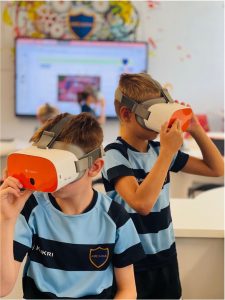
To remain current with the latest trends in STEM education, I actively speak and participate in professional development workshops, attend conferences, and engage with academic literature focusing on emerging technologies. Aside from the STEM Best Practice magazine, one of the biggest bodies of knowledge, current trends, and thinking in the field can be found on LinkedIn, with educators from all over the world.
One innovative tool I incorporate into my teaching is Magic School AI, which supports students by providing tailored learning experiences and instant feedback on their work. This tool allows students to ask questions and receive guidance, fostering a more personalized learning environment. Also, one of the biggest bodies of knowledge, current trends, and thinking in the field can be found on LinkedIn, with educators from all over the world.

Additionally, I utilize LEGO Spike for hands-on projects, enabling students to design, build, and code their creations. This not only enhances their technical skills but also encourages creativity and collaboration. I also employ coding tools like Kubo and Metatalab for younger students, challenging them to design maps of the local area, which deepens their understanding of spatial reasoning and programming concepts. By empowering students to direct their learning experiences with these innovative tools, I feel cultivates an environment that nurtures creativity and adaptability.
- How do you create a learning environment that encourages experimentation, risk-taking, and learning from failure in STEM innovation?
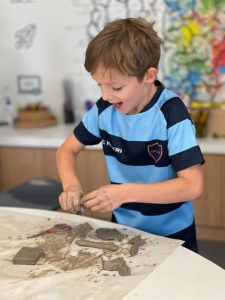 Creating a learning environment conducive to experimentation and risk-taking is essential for fostering innovation in STEM. I prioritize a culture where failure is perceived as a stepping stone to success, encouraging students to learn from their mistakes. This approach is supported by Dweck’s (2006) concept of a growth mindset, which posits that embracing challenges leads to greater achievement. For example, during our Stone Age tools project or when building Mayan civilizations, I emphasize the iterative nature of design and problem-solving. Students are empowered to explore various materials and techniques, reflecting on their processes collaboratively through structured discussions like Stand Up, Hand Up, Pair Up. This not only cultivates resilience but also enhances critical thinking skills, essential for navigating the complexities of modern STEM challenges.
Creating a learning environment conducive to experimentation and risk-taking is essential for fostering innovation in STEM. I prioritize a culture where failure is perceived as a stepping stone to success, encouraging students to learn from their mistakes. This approach is supported by Dweck’s (2006) concept of a growth mindset, which posits that embracing challenges leads to greater achievement. For example, during our Stone Age tools project or when building Mayan civilizations, I emphasize the iterative nature of design and problem-solving. Students are empowered to explore various materials and techniques, reflecting on their processes collaboratively through structured discussions like Stand Up, Hand Up, Pair Up. This not only cultivates resilience but also enhances critical thinking skills, essential for navigating the complexities of modern STEM challenges.
- In what ways do you collaborate with students, colleagues, or external organizations to foster innovation in STEM education?
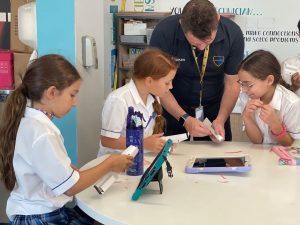
Collaboration is vital in fostering innovation within STEM education. I actively collaborate with colleagues to integrate interdisciplinary approaches, combining insights from various subjects to enrich our curriculum. Moreover, I engage with external organizations to provide students with real-world insights. For instance, during our Formula Ethara program, my role as a judge for the Yas in Schools finals provided an opportunity to gain expert guidance, which I later implemented in the classroom. Additionally, our STEM Stars after-school program, with over 70 participants, emphasizes peer collaboration, enabling students to share ideas and innovate collectively. These collaborative efforts are further enriched by aligning projects with the SDGs, providing a framework for students to understand their role in addressing global challenges while directing their creative outputs in meaningful ways.
